Reality check: selling on social media isn’t taboo.
Although brands and retailers once tiptoed around sales messages directed toward their followers, today consumers embrace social commerce with open arms.
Seriously.
New data from Avionos shows more than half of all consumers have already made purchases directly from social media. Meanwhile, product-related posts represent the most popular type of social content in terms of shares and engagement.
Social commerce isn’t as simple as hitting your followers with offer after offer. In fact, some of the most effective ways to encourage your followers to buy is by going beyond social media itself.
Listen–brands and retailers don’t score sales via social media by accident. You need a strategy.
To better navigate the world of social media and ecommerce, we’ve put together a five step social commerce playbook for brands and retailers wanting to drive more sales to modern buyers:
1. Empower Your Customers to Be Your Best Billboards to Drive More Sales
If you want to convert more social followers, look no further than your own customers.
User-generated content in the form of customer photos represents some of your best marketing firepower. There’s a reason why brands are curating and publishing UGC like crazy right now.
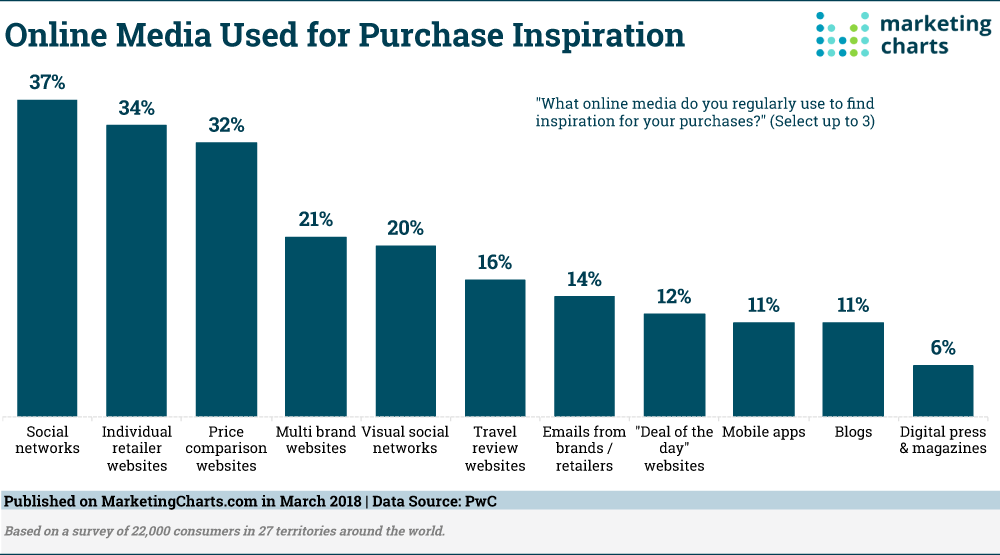
After all, PwC found social media to be the No. 1 channel for inspiring purchases from consumers.
From product recommendations to customer photos that pop up in people’s social feeds, enabling your audience to advertise on your own behalf is a game changer.
And encouraging customers to boost your products is easier than you might think. For starters, social-savvy consumers absolutely love to talk up their latest purchases and will oftentimes tag the brands they support.
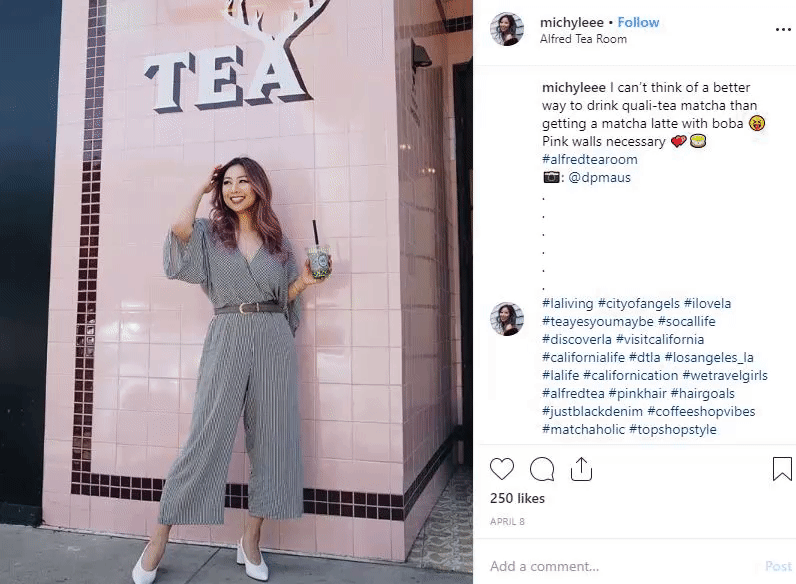
Maybe they want a shout-out themselves. Perhaps they just want to show you a bit of love.
Regardless, what better way to show off your products than through satisfied customers in the real world? This sort of authentic marketing and advertising is night-and-day versus a lifeless product photo.
Don’t Be Afraid to Ask
But again, this sort of promotion doesn’t happen by accident.
Branded hashtags are a huge piece of any social commerce strategy. Hashtags do double-duty of allowing brands to track their social mentions and reach while also giving customers a point to promote their product photos.
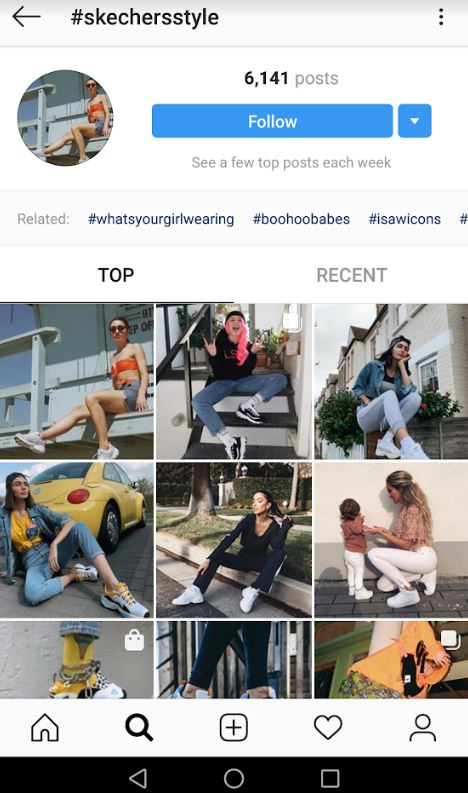
For example, here’s how TopShop promotes its #topshopstyle tag in their Instagram bio (and note how it was featured in the photo above).
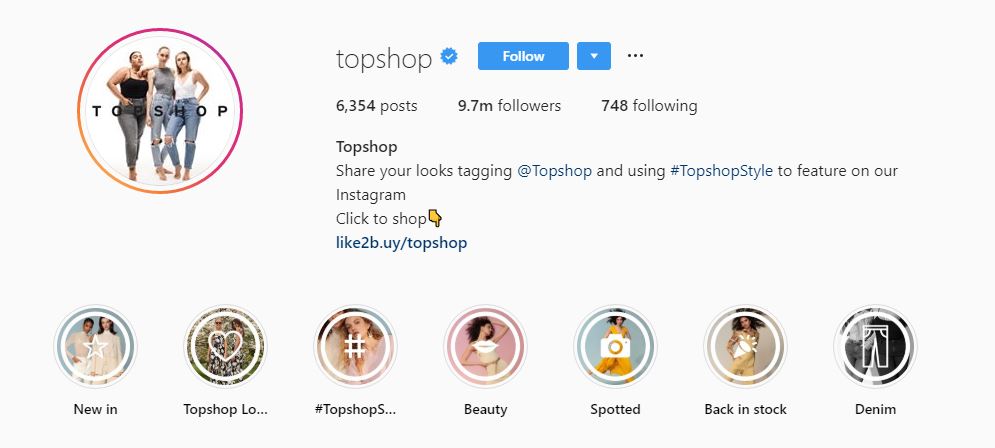
And by publishing user-generated content, you can promote your products directly without coming off like a salesperson. It never hurts to specifically ask for styles and looks for apparel brands.
Other industries can use the same strategy by implementing a branded hashtag to get people talking and more importantly, sharing content. This is this type of brand loyalty you want.
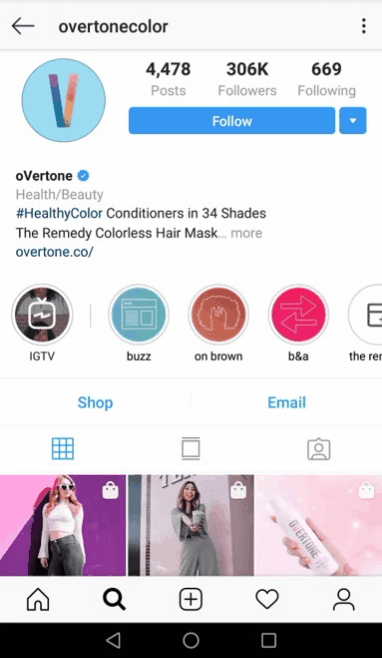
User-generated content is a cornerstone of social commerce. That said, curating and publishing means that brands need a streamlined way to discover customer photos and get permissions for them.
Thankfully, tools features from PowerReviews like the Visual and Social Suite help brands manage, collect and display social content from their customers. Our native collection tools are hands down the best in the industry because we believe in making it easy for customers to provide authentic content.
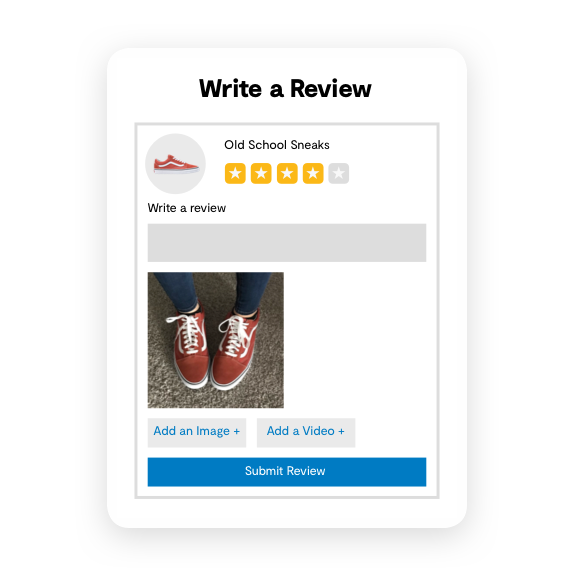
Want to see how our tools do the legwork on behalf of brands and retailers? Schedule a demo to see how PowerReviews empowers businesses by collecting more reviews and social content to increase buyer confidence.
2. Use Social Presence to Increase Your Conversions
Customer photos are a brilliant way to encourage social commerce and more engagement on your brand accounts organically.
However, your social content is also valuable for paid campaigns as well.
How so? Check out how REVOLVE saw an insane lift in ad engagement and conversions through running paid ads on Facebook centered around their social photos.
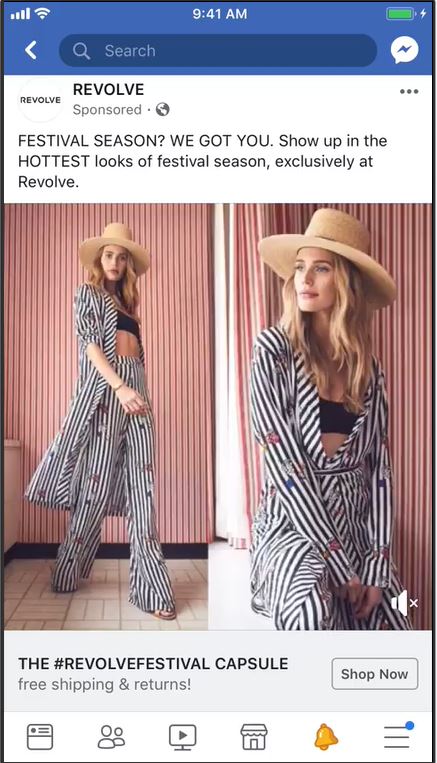
As noted, not all elements of social commerce are restricted to social media. For example, brands like Steve Madden use their Instagram content as part of their email marketing campaigns.
Given the effort it takes to both create and acquire social content, double-dipping it across multiple channels flat out makes sense. This ultimately allows you to squeeze even more of an ROI from your social marketing.
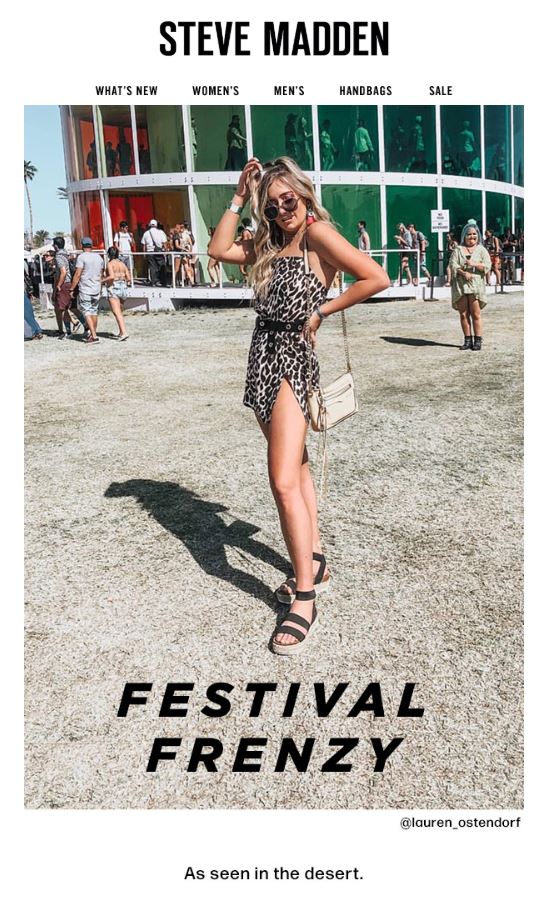
But arguably the best place to leverage your social content is on site. Many brands feature look books, which pull from their Instagram feeds to bring their products to life.
Here’s a great example from Skechers promoting this content across their site.

This again speaks to the importance of curating social content and how doing so can result in more sales. Applying this content to your website and product pages is a surefire way to increase your customer engagement strategy and build a sense of trust among your shoppers.
3. Reach New Audiences Through Influencer Marketing
For the sake of social commerce, brands are upping their influencer marketing budgets in 2019.
How much so?
Businesses are growing their influencer budgets by a staggering 65% in 2019. That’s up from the 39% influencer budget businesses reported just in 2018.
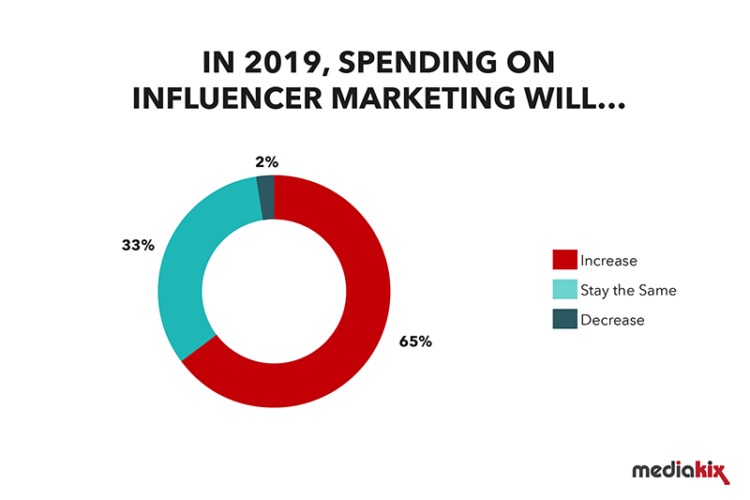
Considering how both millennial and Gen Z customers are turned off by traditional marketing messages, this trend makes perfect sense. Brands need to achieve a certain sense of authenticity among their customers if they want to nurture them and earn their business.
Influencer marketing represents sort of a spin on user-generated content, encouraging paid relationships between brands and users with relevant audiences to those same brands.
These audiences might mirror your target customer demographics or allow you to tap into a totally new market. No matter what industry you’re in, brands are taking advantage of influencer relationships.
Although influencers are most often associated with the fashion space, just about any type of business can get in on board. Kitchen Aid frequently highlights its influencers on social media.
https://www.instagram.com/p/BuriyJnHNns/
Additionally, influencer marketing is fair game for brands and influencers of all sizes. Even household names like Levi, with millions of followers, regularly engage with smaller influencers.
This signals why micro-influencers are so valuable, given their highly engaged audiences and a sense of authenticity that comes with being “the little guy,” so to speak.
https://www.instagram.com/p/BvPK5oPAUwy/
Of course, building these sorts of relationships takes a lot of research and vetting. That’s where PowerReviews again saves the day with its Influencer and Sampling Suite.
With access to a massive network of everyday influencers, brands and retailers are capable of engaging a slew of new audiences, while ramping up their user-generated content at the same time.
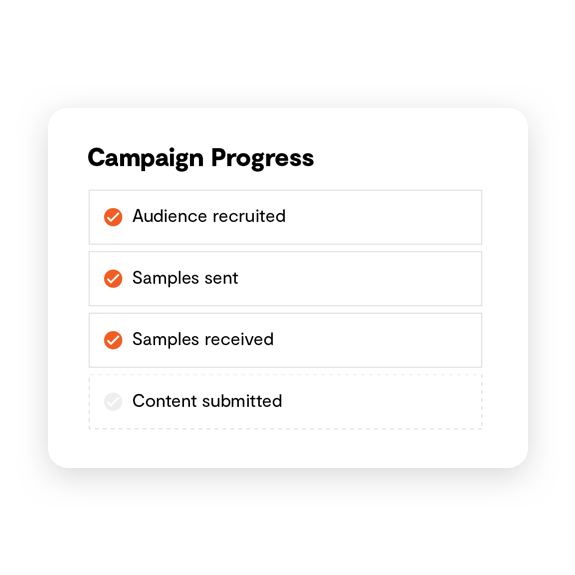
Our product sampling offerings through BzzAgent allow businesses to generate reviews, visual content and new buyers with ease. This approach to influencer marketing is much less time-consuming and simpler for businesses to scale–versus reaching out to influencers one-by-one.
4. Adopt a Hybrid Social Commerce Strategy (Hint: Include Both Paid & Organic)
Let us say tell you this–there is no single “silver bullet” for social commerce.
Brands should be willing to experiment with different channels, including both paid and organic. Likewise, businesses have to understand their own strengths of each channel to make the most of their efforts.
We’ve talked quite a bit about Instagram and know it’s a hotbed for social selling between organic promotion, shoppable posts and influencer marketing. If nothing else, it’s a fantastic platform for keeping your followers up-to-date on your products.
https://www.instagram.com/p/BwZgjnrnjDm/
However, it doesn’t have to be your only social network where you sell your products. Even though Facebook has seen a notably drastic fall in organic reach for brands, its ad platform remains unparalleled.
For brands looking to retarget site visitors or run offers for past customers, tools such as dynamic advertising and remarketing ads could be your bread and butter. It’s all about experimenting with what works with you–and obviously, your customers.

But don’t stop at Instagram and Facebook.
Pinterest has become a valuable–and oftentimes overlooked–avenue for both organic social commerce. The platform’s audience has a ton of buying power and is more than willing to spend.
According to Pinterest, 83% of weekly users have made a purchase based on pins from brands they follow. That’s a lot of buying and selling on the platform you might have been ignoring.
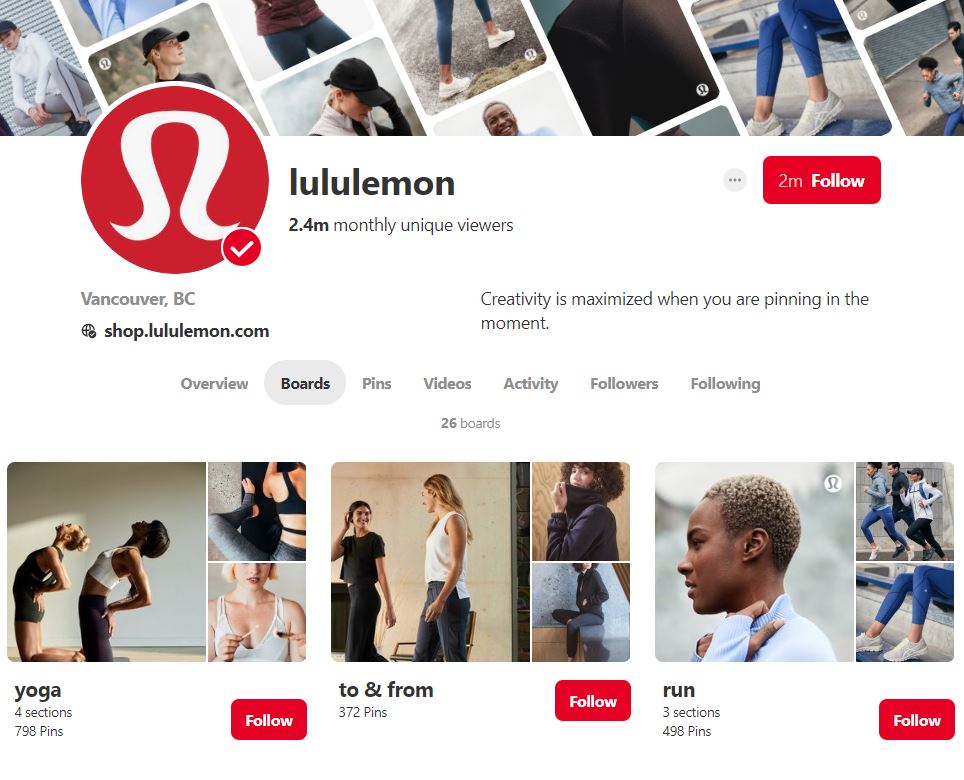
And although Twitter may not be known for its social selling power, it is an invaluable network for providing customer service and building relationships with customers. It’s so simple to go back-and-forth on Twitter.
You also have the chance to make meaningful touch points with followers along the way.
relatable content https://t.co/iNLM6saQuz
— Urban Outfitters (@UrbanOutfitters) April 23, 2019
No matter social platforms are your go-to, your priority beyond social commerce should be listening to your customers. After all, not all of your social content is going to be purely promotion.
Simply having conversations with your customers can lead you to crucial insights for social selling.
And hey, that leads us to our last point!
5. Listen Carefully to Your Social Customers
Modern customers aren’t shy when it comes to sound off on social media.
Whether it’s a product that they’re in love with or something that disappointed them, brands should listen carefully to any and all customer feedback they receive.
This is especially true when it comes to products that customers might want to purchase in the future. Just a simple acknowledgement from Hot Topic, in this example on Twitter, can mean all the difference.
We'll pass along your suggestion for next year – thanks!
— Hot Topic (@HotTopic) April 23, 2019
Listening to the wants and needs of your customers is a no-brainer, but is especially important in an era where consumer relationships are so transparent.
Valuable feedback from customers in any shape or form is another overlooked piece of social commerce. The ability to share the positive experiences of people who’ve purchased from you helps ease the minds of folks on the fence about doing the same.
Attention Brands: Listen to Customers on Your Retailer Sites
More often than not, brands are actually paying some attention to customers on social media and throughout their own websites. But what about retailer sites selling your products?
Say your brand is PING Golf, which sells an assortment of equipment and apparel across the web. And one of your biggest retailers, PGA Tour Superstore, sells your golf clubs.
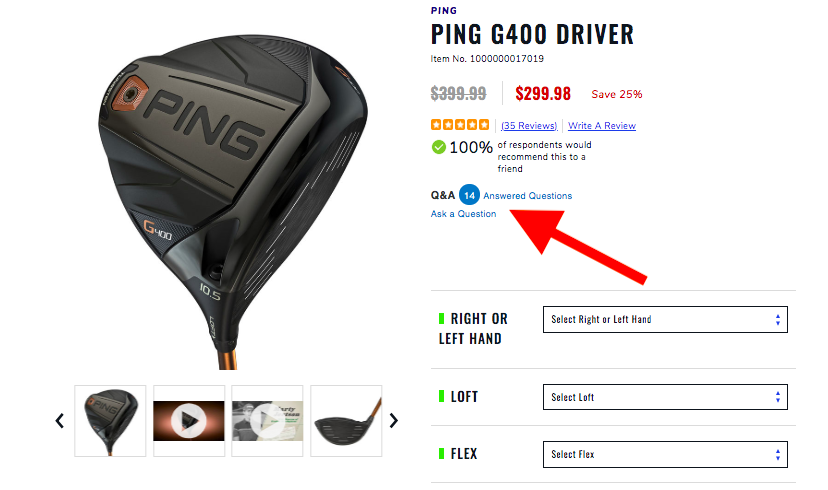
Luckily, the PGA Tour Superstore does a fantastic job of including questions and answers software, which provides answers to purchase-blocking questions by verified buyers or its own customer support team. But what if your buyers are still a little undecided?
That’s why we created Brand Engage, a platform for brands to connect to potential customers across their retailer sites on the PowerReviews Open Network. In this example, we can see the PGA Tour Superstore provides a great answer to consumer question.
 But what if your brand could do this across more retailers?
But what if your brand could do this across more retailers?
Brands should address all forms of feedback and Brand Engage makes it easier.
Anything you can do to boost your brand reputation across product pages and social media is essential to effective social commerce.
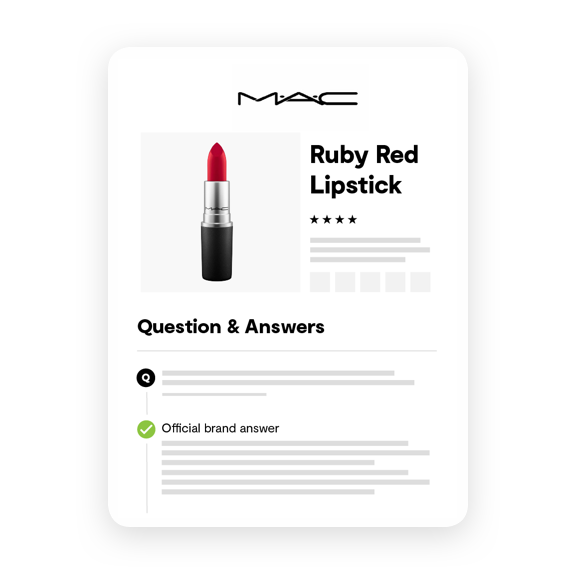
Want to learn more about Brand Engage? Join our network to connect to some of the leading global retailers in the PowerReviews Open Network!
Is Your Brand on Board With Social Commerce?
Consumers today are more than happy to purchase products via social media. But as noted in this guide, you need a scalable strategy to make it happen.
Rather than settle with the occasional social sale, think about how you can take your follower count and translate them into consistent, loyal buyers. Translate your social presence into dollars and cents while building more meaningful connections with your customers along the way.
Have any recommendations to improve strategies? Hit us up on Twitter!





